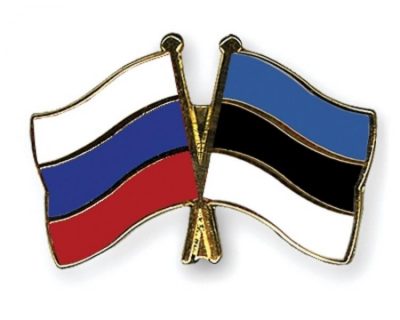Plan to Blockade Russian Shipping in Baltic Sea Breaks International Law and Could Provoke War

All Global Research articles can be read in 51 languages by activating the Translate Website button below the author’s name.
To receive Global Research’s Daily Newsletter (selected articles), click here.
Follow us on Instagram and Twitter and subscribe to our Telegram Channel. Feel free to repost and share widely Global Research articles.
***
Western intentions to arm Estonia with the most modern types of conventional weapons which can target Saint Petersburg, as well as the installation of a medium-range anti-missile defence system, suggests that the Baltic country is wanting to challenge Russia despite its military barely even having enough professional soldiers to field a single battalion. At the same time, and just as provocative, Estonian authorities discussed an introduction of a 24 nautical mile coastal zone in the Gulf of Finland to limit the navigation of Russian ships.
It is demonstrated that Estonia is a highly active anti-Russian state that hopes its actions will receive Western tributes and rewards. However, in pursuing this goal, the Baltic country is going as far as wanting to break international law by restricting Russian shipping in waters it has a right to navigate through.
Moscow has repeatedly warned that attempts to deploy offensive NATO weapons will immediately provoke retaliatory steps. By Estonia wanting to place weapon systems that can target Russia’s second largest city, it cannot be discounted that the Russian military will deploy the Iskander system or another type of weapon to completely cover Estonia’s sea, land and air territory.
It is recalled that Lithuania attempted to blockade the Russian exclave of Kaliningrad in 2022 by stopping rail and road transportation and attempted to justify the action because of the EU’s sanctions regime. This quickly failed as a military and economic blockade can lead to a ‘casus belli’ – a reason for war, which would not insure Lithuania under NATO’s “mutual defence” article.
Larger European NATO countries are rotating their units, as well as military equipment, including aviation and F-16 fighter jets, in the Baltic countries. The Baltic countries are full of foreign soldiers and equipment as they themselves cannot ensure their own security despite implementing policies that are extremely provocative and hostile to Russia.
The Russian ambassador in Tallinn, Vladimir Lipayev, who disclosed that Western countries plan to supply Estonia with the most modern types of conventional weapons, also said that the Anglos had an interest in creating an anti-Russian outpost in the Baltic country in order to carry out economic, political, cultural and military pressure on Russia.
However, the Baltic countries are playing with fire as the Ukraine war has demonstrated that Russia is capable of demilitarizing hostile states. Even Ukraine, which has all the resources of the West behind it and the second largest army in Europe after Russia, is failing to stem back the tide of war and territorial loss.
With the Ukrainian military appearing to be on course for an imminent collapse in 2023, the US and UK are escalating tensions so that continuous conflict can drain Russia’s resources and attention. An internationalized effort to involve as many countries as possible in a confrontation with Russia only puts countries under a puppet status at risk of Russian retaliation, as Ukraine shows.
As said, if Estonia were to blockade Russian ships, it cannot be protected under NATO’s Article 5 as it initiated the hostility by breaking international law. Understandably, the leading countries of the EU do not want to be exposed to a Russian counterattack, which is why the Baltics and Poland are being used as cannon fodder instead – just as Ukraine currently is.
With the collapse of the Soviet Union in 1991, a dividing line in the middle of the Gulf of Finland was agreed upon between Russia and newly independent Estonia. From this middle line, Finland and Estonia retreated three kilometres to allow Russia a six-kilometre channel for the free passage of Russian merchant and military fleets, thus actually making these international waters. In order to blockade Russia in the Gulf of Finland, it is necessary for Finland to implement the same policy. If Tallin unilaterally introduces such a zone in its territorial waters, then Russia has the option to use the Finnish part of the gulf.
For now, there is no indication that Finland plans to block Russian ships. If Finland and Estonia were to block Russian shipping, Moscow would have a strong case to appeal to the UN Convention on the Law of the Sea, something that would surely humiliate a country like Finland which likes to pride itself on supposedly adhering to international law very strictly.
Therefore, although the Estonian side may be enthusiastic in enforcing anti-Russian measures on the encouragement of Anglo countries, there is a likelihood that regional countries like Finland and Germany will not want a new front of tensions with Russia and will attempt to coerce the Baltic country to moderate its attitude.
*
Note to readers: Please click the share buttons above. Follow us on Instagram and Twitter and subscribe to our Telegram Channel. Feel free to repost and share widely Global Research articles.
Ahmed Adel is a Cairo-based geopolitics and political economy researcher.
Featured image is from OneWorld

